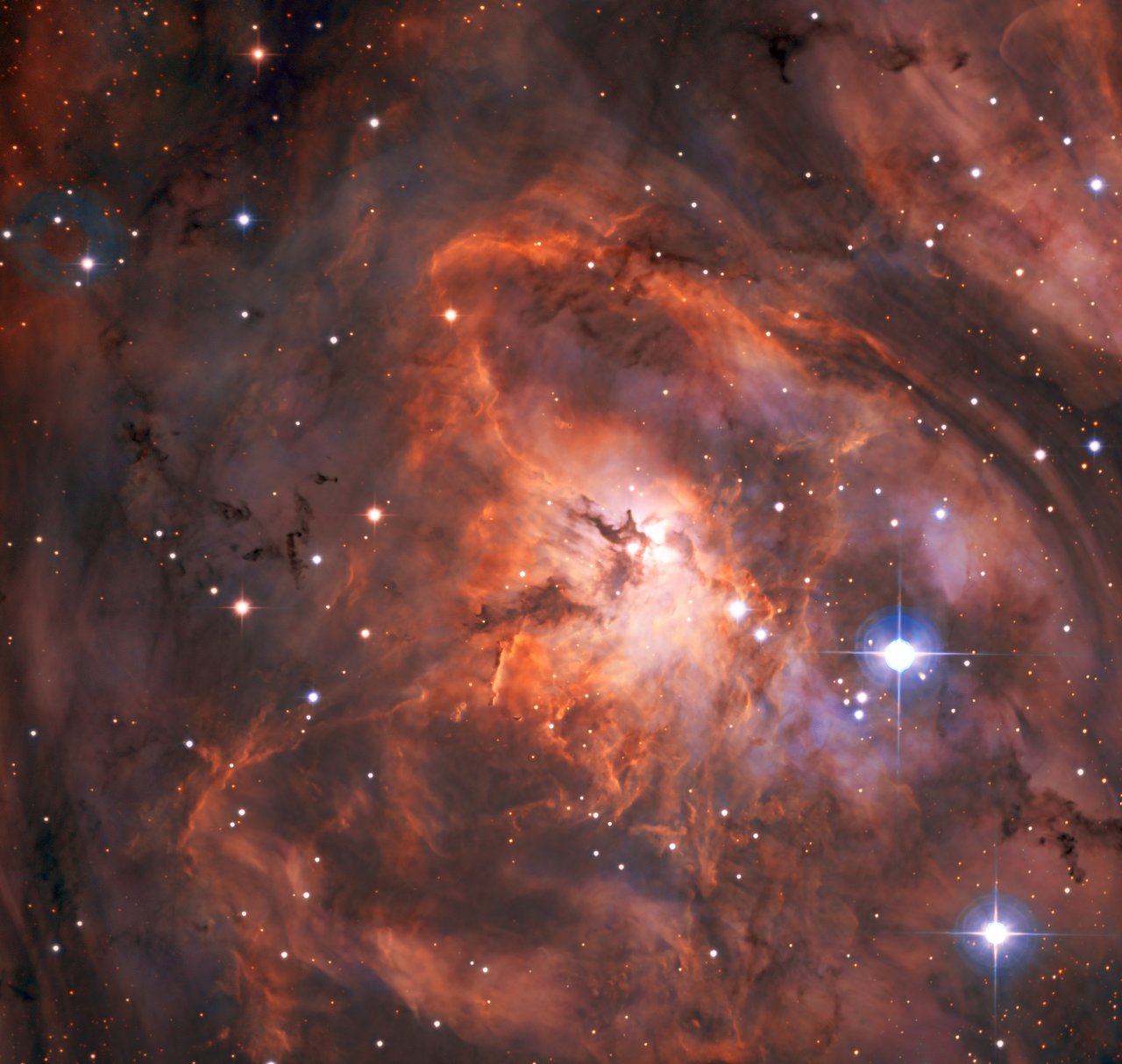
The European Southern Observatory (ESO) has been showing off its new toys, recently sharing first light images from its new telescopes Io, Europa, Ganymede, and Callisto. Each telescope is powerful on its own, but they really shine when the four are combined together into the Search for habitable Planets EClipsing ULtra-cOOl Stars (SPECULOOS) instrument.
Now the ESO has released the first image collected by SPECULOOS, and it’s a stunning portrait of the Lagoon Nebula, also known as Messier 8 or NGC 6523. SPECULOOS isn’t even designed to study nebulae — it is designed to search for habitable planets — but it’s hard to object to the gorgeous results.
The Lagoon Nebula is vast, stretching over 55 light-years wide and 20 light-years tall. It is also far away, at 5,000 light-years’ distance from Earth, but because of its huge size it still appears three times larger than the full Moon in the sky. On a clear night, it is even possible to glimpse the nebula with the naked eye.
The nebula is not only visually arresting but is also an busy and productive region of space. The dust and gases that make up the nebula swirl together around large, hot stars which give out ultraviolet radiation. This radiation ionizes nearby gas which is what makes the nebula shine and twist into cloud-like shapes. The radiation also blows gas and dust around, creating regions with greater or lower density. In areas of high density, particles are pulled together by gravity and new stars are born.
This isn’t the first beautiful image we’ve seen of the Lagoon Nebula. Last year, Hubble celebrated its 28th anniversary by viewing the nebula and captured this colorful image:

In the Hubble image you can see the star Herschel 36 shining brightly in the center, illuminating the gas around it. The radiation from Herschel 36 forms two distinctive features: interstellar twisters which are half a light-year long. Like twisters here on Earth, these rope-like structures are believed to form into funnel shapes due to differences in temperatures between the hot regions of gas and the colder regions within the gas clouds. Eventually these structures will collapse and create new stars.
Editors' Recommendations
- Hubble Space Telescope images exceptionally fluffy galaxy
- See the very first image (and first selfie!) from James Webb
- Gaze into the Cleopatra’s Eye nebula, captured by Hubble
- Check out the first images sent by Hubble space telescope since reboot
- A 10,000-year-old conflict between two stars formed the Necklace Nebula




